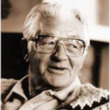The worst hard time: the untold story of those who survived the great American dust bowl
Description
More Details
061834697
9781400122202
9780547347776
Excerpt
Similar Titles From NoveList
Similar Authors From NoveList
Published Reviews
Booklist Review
Following the fortunes of representative settlers of the southern Great Plains, Egan's narrative of the dust bowl during the Depression begins with the seeds of environmental disaster. The area was the last tract of the continental U.S. to be homesteaded, the last episode of open-land real-estate showmanship that enticed people to start over. Settlement was a dare, writes Egan, a dare of plowing rain-sparse, blustery grassland. And briefly, around World War I's inflated grain prices, the dare paid off: towns materialized on the horizon, homesteaders such as Bam White moved in, cheered on by boosters like John McCarty, editor of the Dalhart Texan. Every man a landlord was the slogan of the era, a banner of optimism that eroded into despair due to dust storms of relentlessly increasing ferocity. In vivid fashion, Egan reports on the grit, the drifts, and the figures bent against the gusts. All the elements of the iconic dust bowl photographs come together in the author's evocative portrait of those who first prospered and then suffered during the 1930s drought. --Gilbert Taylor Copyright 2005 Booklist
Publisher's Weekly Review
Egan tells an extraordinary tale in this visceral account of how America's great, grassy plains turned to dust, and how the ferocious plains winds stirred up an endless series of "black blizzards" that were like a biblical plague: "Dust clouds boiled up, ten thousand feet or more in the sky, and rolled like moving mountains" in what became known as the Dust Bowl. But the plague was man-made, as Egan shows: the plains weren't suited to farming, and plowing up the grass to plant wheat, along with a confluence of economic disaster-the Depression-and natural disaster-eight years of drought-resulted in an ecological and human catastrophe that Egan details with stunning specificity. He grounds his tale in portraits of the people who settled the plains: hardy Americans and immigrants desperate for a piece of land to call their own and lured by the lies of promoters who said the ground was arable. Egan's interviews with survivors produce tales of courage and suffering: Hazel Lucas, for instance, dared to give birth in the midst of the blight only to see her baby die of "dust pneumonia" when her lungs clogged with the airborne dirt. With characters who seem to have sprung from a novel by Sinclair Lewis or Steinbeck, and Egan's powerful writing, this account will long remain in readers' minds. (Dec. 14) (c) Copyright PWxyz, LLC. All rights reserved
Library Journal Review
What happened when dust clouds settled over the Plains during the Depression? A Pulitzer Prize-winning reporter for the New York Times revisits the little-told story. An in-house favorite that's attracting huge attention. (c) Copyright 2010. Library Journals LLC, a wholly owned subsidiary of Media Source, Inc. No redistribution permitted.
Kirkus Book Review
Grim, riveting account by New York Times reporter Egan makes clear that, although hurricanes and floods have grabbed recent headlines, America's worst assault from Mother Nature came in the form of ten long years of drought and dust. The "dust bowl" of the 1930s covered 100 million acres spread over five states: Kansas, Oklahoma, Texas, Nebraska and Colorado. From 1930 to 1935, nearly a million people left their farms, littered with animal corpses and stunted crops. Schools closed. Towns simply disappeared. Thousands died from "dust pneumonia," a new condition born of swallowing and inhaling the swirling topsoil. The author personalizes this tragedy by focusing on a handful of hardy settlers who came to America's heartland with high hopes and boundless energy, then watched with growing despair as the earth turned against them. In truth, the dust bowl was largely a human creation. The great southern plains, once covered with native grasses that fed the buffalo and held the soil in place, were essentially stripped bare in the 1920s by wheat-farmers eager to cash in on cheap land and high grain prices. The newly invented tractor made the job easier, and unusually wet weather in the late '20s made farming on the arid plains seem feasible. But then the Depression hit, wheat prices crashed and once-bountiful farms went fallow, abandoned to the deepening drought and ever-blowing winds that literally sent the soil skyward. In the midst of disaster, Egan finds heroes. Among them is country physician Doc Dawson, who opened a sanitarium for dust pneumonia victims, lost all his money farming and spent his last, penniless years running a soup kitchen. Stark and powerful, a gripping if depressing read and a timely reminder that a Nature abused can exact a terrible retribution. Copyright ©Kirkus Reviews, used with permission.



































